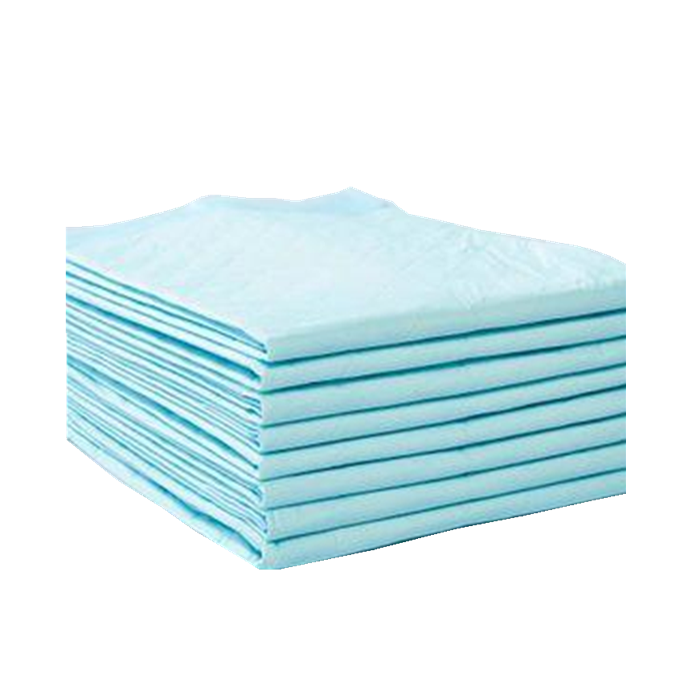In healthcare settings such as hospitals and nursing homes, maintaining hygiene, comfort, and patient safety is a top priority. One essential product that plays a crucial role in achieving these goals is the under pad (also known as bed pads, incontinence pads, or disposable chux). These absorbent pads are placed beneath patients to protect bedding and surfaces from moisture, spills, and bodily fluids.
Under pads are widely used in medical facilities, home care, and long-term care institutions due to their effectiveness in preventing infections, reducing laundry costs, and improving patient comfort. This article explores the top benefits of using under pads in hospitals and nursing homes, highlighting why they are indispensable in modern healthcare.
1. Enhanced Patient Comfort and Dignity
Patients in hospitals and nursing homes often experience incontinence, post-surgical drainage, or mobility issues, making them prone to wetness and skin irritation. Under pads provide a soft, dry surface that helps maintain comfort and prevents the distress of lying in damp sheets.
- Moisture-wicking properties keep the skin dry, reducing discomfort.
- Disposable options eliminate the need for frequent sheet changes, allowing patients to rest undisturbed.
- Preserves dignity by discreetly managing incontinence without embarrassment.
For elderly patients and those with limited mobility, under pads significantly improve their quality of life by preventing prolonged exposure to moisture.
2. Prevention of Pressure Sores and Skin Breakdown
Prolonged exposure to moisture can lead to pressure ulcers (bedsores), a serious concern for bedridden patients. Under pads help mitigate this risk by:
- Absorbing excess moisture that contributes to skin maceration.
- Providing a cushioned layer that reduces friction against sheets.
- Maintaining a dry environment, which is essential for wound prevention and healing.
Hospitals and nursing homes that use high-quality under pads report lower incidences of pressure ulcers, leading to better patient outcomes and reduced treatment costs.
3. Infection Control and Hygiene Maintenance
Healthcare-associated infections (HAIs) are a major concern in medical facilities. Under pads play a vital role in infection prevention by:
- Containing bodily fluids (urine, blood, wound exudate), reducing contamination risks.
- Disposable under pads minimize cross-contamination compared to reusable cloth pads.
- Reducing bacterial growth by keeping surfaces dry and clean.
By using single-use under pads, hospitals and nursing homes can maintain sterile environments, protecting both patients and caregivers from infections.
4. Cost-Effective Solution for Healthcare Facilities
Managing incontinence and fluid spills can be expensive due to frequent laundry needs. Under pads offer a cost-efficient alternative by:
- Reducing laundry loads—disposable pads eliminate the need for constant washing.
- Minimizing mattress replacement costs—protecting beds from stains and damage.
- Lowering labor costs—caregivers spend less time changing sheets and more time on patient care.
For nursing homes and hospitals, switching to high-absorbency under pads can lead to significant long-term savings.
5. Improved Caregiver Efficiency
Nurses and caregivers face demanding workloads, and under pads help streamline caregiving tasks by:
- Reducing the frequency of bedding changes, saving time.
- Simplifying cleanup—disposable pads can be quickly discarded.
- Enhancing mobility support—waterproof under pads allow for easier patient repositioning.
This efficiency allows medical staff to focus more on direct patient care rather than constant cleaning.
6. Versatility in Medical and Home Care Settings
Under pads are not limited to hospitals—they are also widely used in:
- Home healthcare for elderly or disabled individuals.
- Post-surgical recovery to manage wound drainage.
- Hospice care to ensure patient comfort.
- Pediatric care for children with bedwetting issues.
Their adaptability makes them a valuable tool across various healthcare scenarios.
7. Environmental Considerations (Eco-Friendly Options)
While disposable under pads are convenient, some facilities opt for eco-friendly alternatives, such as:
- Biodegradable under pads made from sustainable materials.
- Reusable, washable pads for long-term use.
Healthcare providers can choose options that balance hygiene, cost, and environmental impact.
Conclusion
Under pads are a critical component of modern healthcare, offering hygiene, comfort, cost savings, and infection control benefits. Hospitals and nursing homes that invest in high-quality under pads enhance patient care, reduce staff workload, and improve overall facility hygiene.
Whether for incontinence management, wound care, or general patient comfort, under pads provide a simple yet highly effective solution that benefits both patients and caregivers.
By understanding these advantages, healthcare facilities can make informed decisions to optimize patient care and operational efficiency.
Post time: Jul-31-2025

